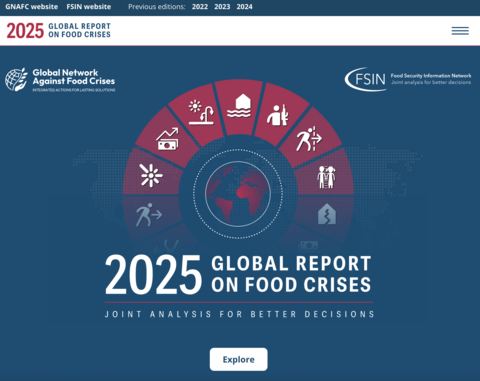GRFC 2025

GRFC 2025
- Rising Food Insecurity
- In 2024, 295 million people across 53 countries faced acute food insecurity, a rise of 13.7 million from 2023.
- Marks the sixth consecutive annual increase, highlighting a persistent global hunger crisis.
- Key Drivers
- Conflict and political instability remain the primary drivers in many regions, e.g., Sudan, South Sudan, Gaza.
- Economic shocks, including inflation and unemployment, reduce access to food.
- Climate extremes such as floods, droughts, and cyclones worsen food availability.
- Forced displacement compounds vulnerability, as displaced populations lose access to livelihoods and food sources.
- Geopolitical and Regional Dimensions
- Famine confirmed in Sudan, South Sudan, Haiti, Mali, and Gaza.
- Gaza faces looming famine risks between May–September 2025.
- Fragile regions are disproportionately affected, highlighting the intersection of conflict, poverty, and climate vulnerability.
- Policy Implications
- Emphasizes need for coordinated humanitarian and development action.
- Highlights the importance of joint analysis by FSIN and GNAFC for evidence-based interventions.
- Calls for long-term strategies addressing the structural drivers of food insecurity, including conflict resolution, climate resilience, and economic stabilization.
- Global Development Context
- Rising acute food insecurity threatens the achievement of SDG 2 (Zero Hunger) and SDG 13 (Climate Action).
- Interconnected crises (conflict + climate + displacement) underscore the need for multi-sectoral global collaboration.
Conclusion:
GRFC 2025 reflects a worsening global hunger scenario driven by overlapping crises. It underscores the urgency of integrated humanitarian, development, and climate policies, emphasizing conflict resolution, economic stability, and resilience building in vulnerable regions.
Updated - 11 July 2025 ; 12: 23 PM | https://www.wfp.org/
Global Report on Food Crises 2025 GRFC 2025 FSIN Global Network Against Food Crises GNAFC Food Security Acute Food Insecurity Hunger Malnutrition Conflict Economic Shocks Climate Extremes Forced Displacement Humanitarian Action Development Action Fragile Regions Global Assessment Country-Level Analysis International Reports UPSC GS Paper 2 GS Paper 3 Prelims Mains